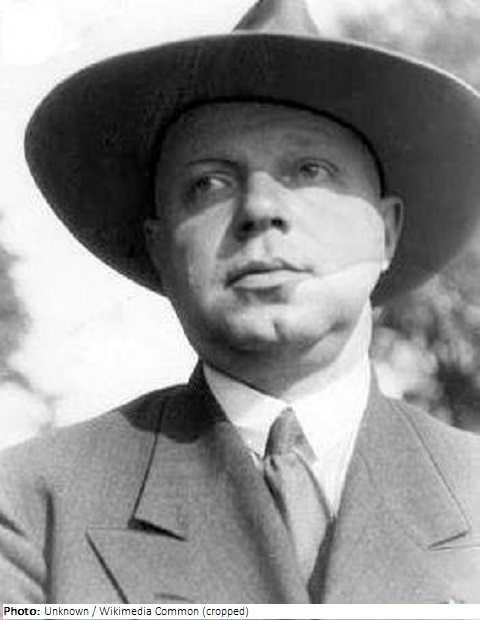
| Roles | Referee |
|---|---|
| Sex | Male |
| Full name | Tadeusz•Pruszkowski |
| Used name | Tadeusz•Pruszkowski |
| Born | 5 April 1888 in Borucice, Łódzkie (POL) |
| Died | 1 July 1942 (aged 54 years 2 months 26 days) in Warszawa (Warsaw), Mazowieckie (POL) |
| NOC |  Poland Poland |
Tadeusz Pruszkowski began his studies in 1904 at the Warszawa (Warsaw) School of Art. From 1908, he continued his education in Paris and made trips to Switzerland and Algeria. In 1911 he co-founded the artists’ society “Młoda Sztuka” and had his first solo exhibition three years later. During World War I, he fought in the ranks of the Polish Legions under the pseudonym “Rdza”.
In 1922 Pruszkowski started teaching at the Warsaw School of Art, from 1934 as a full professor. For several years, he was also director of the school, and rector, respectively, after the transformation into the Academy of Fine Arts. He led the class for painting and initiated among his students the foundation of four separate groups of artists. He was also active as an exhibition commissioner, a member of the Society for the Encouragement of Fine Arts in Warsaw (1915-35), and several other organizations promoting Polish art. He was also a co-founder and member of the “Rytm” group (1922-32), the “Brotherhood of St. Łukasz” (1925-1930), and the Warsaw School (1929-39).
Pruszkowski’s realistic style of oil painting is indebted to the tradition of Dutch and Spanish painting of the 17th century. Craftsmanship and technical perfection were of crucial importance to him. He also drew a lot with charcoal, ink, and pencil. He began with symbolic-historical themes but painted mainly portraits, as well as self-portraits with a humorous touch. During the time of the German occupation, he produced sketchy portraits and in 1942 a last self-portrait. In addition, he painted landscapes and still lifes. Among his monumental works were seven history paintings (tempera) of episodes from Polish history for the pavilion at the 1939 World’s Fair in New York, executed together with members of the “Brotherhood of St. Łukasz”. He received numerous high Polish awards, including the Commander’s Cross of the Order of Polonia Restituta in 1938.
For newspapers and magazines, Pruszkowski wrote exhibition reviews and feature articles on artistic life. He propagated the idea of national characteristics in art and a state patronage. In 1926, the film comedy “Szczęśliwy wisielec, czyli Kalifornia w Polcse” (“Happy Hangman, or California in Poland”) was shot in Kazimierz Dolny with Pruszkowski as director and producer. One member of the cast was future art silver medalist Janina Konarska.
Pruszkowski was also an enthusiastic supporter of automobile sports and aviation, owner, and pilot of a sports plane, co-founder and member of the Academic Aero Club, and from 1935 president of the Warsaw Aero Club.
The outbreak of the Second World War hit Pruszkowski in Kazimierz Dolny. Together with his wife, the painter Zofia Seweryna Katarzyńska (1887-1957), he traveled to Warsaw and stayed there without leaving home. He was arrested on the night of July 1, 1942, and transported to the Gestapo headquarters. After interrogation, he was transported to the prison in Pawiak, where he was shot when he tried to escape the convoy.
| Games | Sport (Discipline) / Event | NOC / Team | Phase | Unit | Role | As | |
|---|---|---|---|---|---|---|---|
| 1936 Summer Olympics | Art Competitions |  POL POL |
Tadeusz Pruszkowski | ||||
| Painting, Applied Arts, Open (Olympic) | Final Standings | Judge | |||||
| Painting, Paintings, Open (Olympic) | Final Standings | Judge | |||||
| Painting, Graphic Arts, Open (Olympic) | Final Standings | Judge | |||||
| Painting, Drawings And Water Colors, Open (Olympic) | Final Standings | Judge |